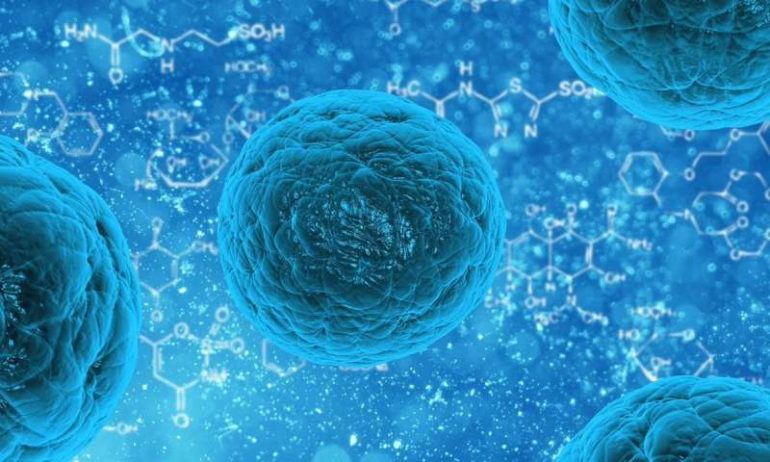The mechanism by which the plant hormone cytokinin controls cell division has been discovered—a breakthrough that significantly improves our understanding of how plants grow.
Cell division is fundamental for all forms of life—all multi-cellular organisms, including plants and animals, develop from a single cell that divides billions of times to build a complex organism. Undifferentiated stem cells in plants function as a reservoir of new cells from which the plant can grow and develop specialised tissues. New stems, new leaves, new roots and new flowers all originate from small clusters of stem cells in growth regions called apical meristems.
The cells in these growth regions are continually dividing in a process called mitosis, which build the plant’s architecture. Scientists have long known that cytokinin is central to these acts of cell division, but without knowing exactly how it stimulates cell proliferation.
In a paper published in the journal Science on Thursday 25 February 2021, the team from the Sainsbury Laboratory at the University of Cambridge and the California Institute of Technology discover for the first time how cytokinin activates stem cell division in plants.
Using Arabidopsis thaliana—a member of the mustard family commonly used as a model plant in plant science research—they show cytokinin directly promotes the transport of the transcription factor MYB3R4 from the cytoplasm to the nucleus where it activates the expression of key cell cycle genes.
Dr. Weibing Yang, lead author of the paper and now a group leader at the Centre of Excellence for Plant and Microbial Science (CEPAMS) said: “Understanding how stem cell self-renewal is controlled is crucial for understanding plant growth and development. We knew the plant hormone cytokinin was important, and our research now explains the mechanism by which cytokinin regulates stem cell division—It does this by shuttling proteins into the nucleus where they activate genes involved in mitosis.”
In mitotic cell division (mitosis), chromosomes replicate and then are segregated equally into two daughter cells. “Using time-lapse confocal microscopy of live plants, we were able to capture cellular dynamics of proteins that were found to be important for triggering mitosis,” added Dr. Raymond Wightman, Imaging Core Facility Manager at the Sainsbury Laboratory.
“Time lapse observation of individual cells revealed rapid changes in MYB3R4 protein location,” Dr. Yang explained. “Prior to cell division the protein was predominantly in the cytoplasm, and at the onset of mitosis, there was a rapid accumulation of MYB3R4 in the nucleus, followed by the protein being exported back into the cytoplasm at the completion of cell division. It has been known for more than 40 years that plant endogenous cytokinin level fluctuates during the cell cycle, and peaks at the G2/M transition. We now show that a direct response of this cytokinin peak is MYB3R4 nuclear trafficking.”
Further experiments revealed that cytokinin functions as a ‘molecular switch’ that triggers a positive feedback loop—it promotes MYB3R4 nuclear localisation to activate the transcription of importin genes IMPA3 and IMPA6, which in turn act to facilitate MYB3R4 nuclear import. “With mathematical modelling, we demonstrate that this positive feedback can cause MYB3R4 nuclear trafficking to become both faster and stronger,” said Professor Henrik Jönsson.
“Our findings may have practical applications,” Dr. Yang added, “through mutating the nuclear export signal, we were able to engineer a constitutively nuclear localised MYB3R4 protein, and found that it could greatly enhance stem cell proliferation and meristem growth, partially mimicking the effect of cytokinin treatment.”
“Increased cytokinin in the shoot meristem is one of the results of increasing nitrogen nutrition at the roots. Being able to increase the cytokinin cell division response in the meristem may provide a way to have plants grow as if they were well-fertilized, even when nitrogen levels in the soil are suboptimal,” said Professor and Howard Hughes Medical Institute Investigator Elliot Meyerowitz.
By enabling a deeper understanding of how plant cells divide in growth, fundamental plant science like this research could help identify new ways to enhance plant growth and sets a foundation for future work that can impact on plant health and agricultural yield.
Greater understanding of plant hormone results in stem cells that grow shoots
More information:
Molecular mechanism of cytokinin-activated cell division in Arabidopsis. Science. DOI: 10.1126/science.abe2305
Provided by
University of Cambridge
Citation:
How plant stem cells renew themselves—a cytokinin story (2021, February 25)
retrieved 25 February 2021
from https://phys.org/news/2021-02-stem-cells-renew-themselvesa-cytokinin.html
This document is subject to copyright. Apart from any fair dealing for the purpose of private study or research, no
part may be reproduced without the written permission. The content is provided for information purposes only.



